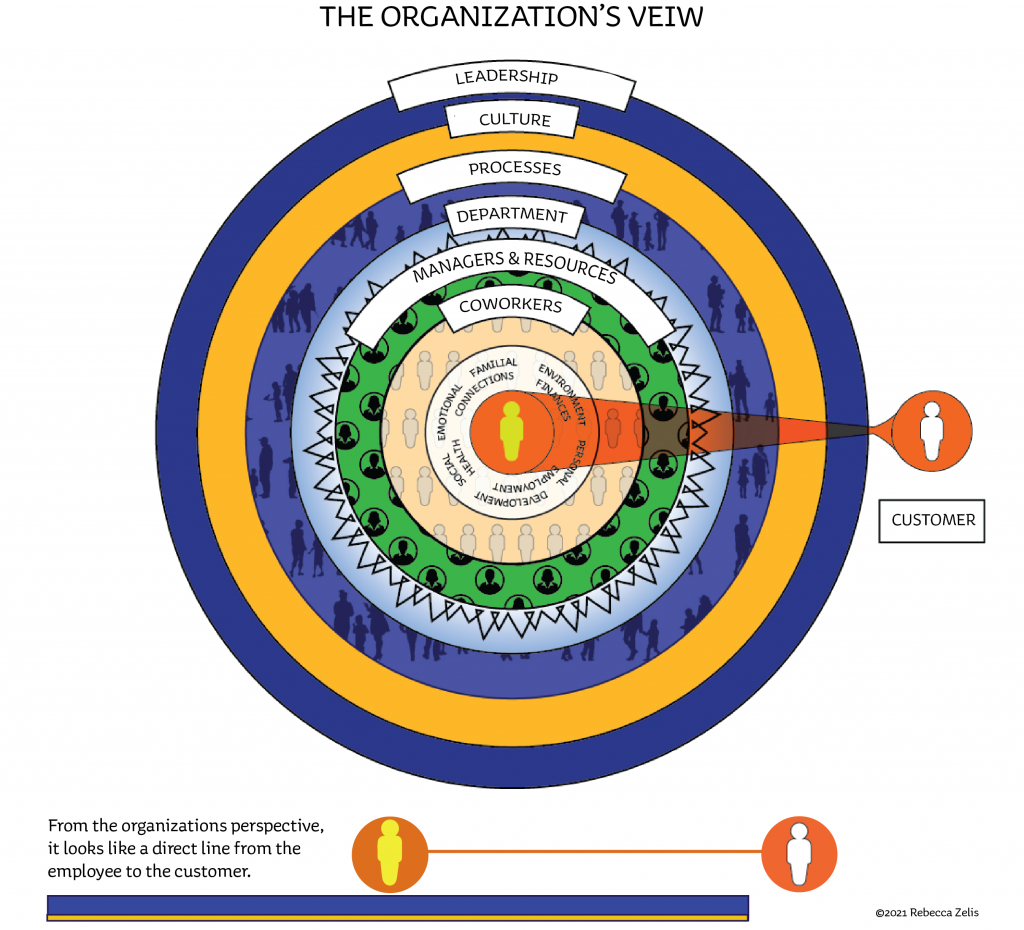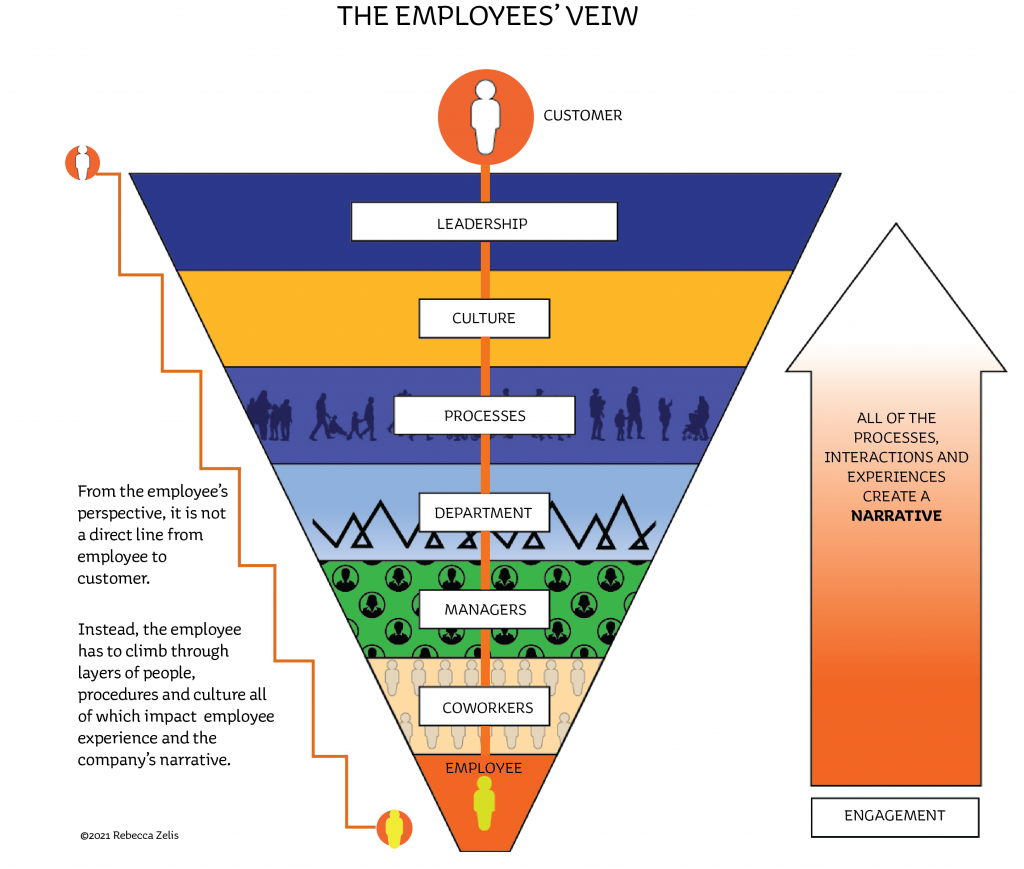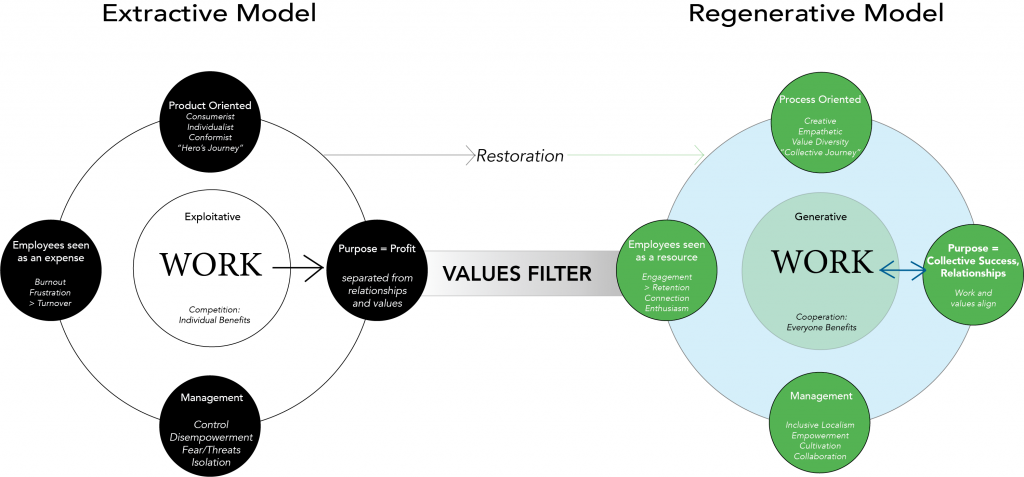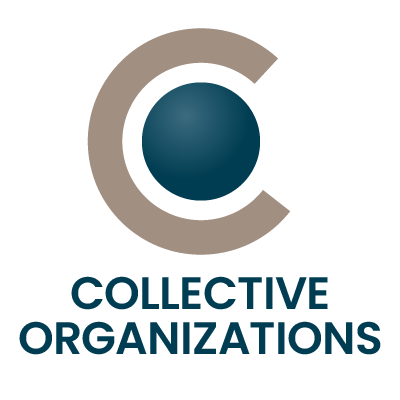Hierarchical organizations have a perception problem. The people who create policies and systems have a very different viewpoint from employees who utilize them.
An employee's engagement can depend on from what perspective they are viewing the organization.
Organization's View of EEX

The organization sees the connection between the employee and the customer as linear and accessible.
In a hierarchical model most employees are not involved in conceptualizing and developing procedures, policies, brand or culture. This divide often results in a culture and systems that appear good in theory but are not in practice.Employee's View of EEX

From an employee's view, many layers separate them from desired outcomes like good customer service, innovation, and adherence to safety practices.
Each layer has the ability to disengage or disconnect the employee from the customer and/or organization. Working collectively instead of within traditional hierarchies results in organizational systems and an authentic culture that enhance employees' sense of connection and efficacy.Every process, interaction and experience a person has with an organization and its leaders creates a narrative. This narrative informs engagement.
The “take, make, dispose” economic model of the industrial era dominated business for generations. Company profits relied on large amounts of inexpensive materials and energy and this mindset was often transposed to a “disposable” workforce. “An economy based on extracting from a finite system faster than the capacity of the system to regenerate will eventually come to an end” (MG).The same is true for relationships with valued employees who are unable to regenerate their creativity and well-being in the workplace.

In a regenerative model, companies optimize internal systems to support their employees, and work to address external influences on employee well-being with the understanding that performance can be affected by multiple factors existing both in and outside of the workplace. Continual feedback and sincere, ongoing attention to employee experience build an understanding of the engagement process.The well being of employees is seen as a collective responsibility that includes the employee, coworkers, supervisors, community, organization, and also clients/customers.

